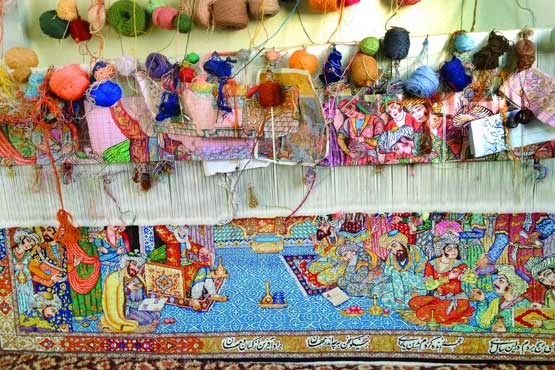The Rich Tradition of Chinese Carpets
China boasts a long and esteemed history of carpet weaving, with the earliest examples dating back over 2,000 years. Initially, these carpets were primarily used in imperial courts, reflecting the grandeur and sophistication of Chinese craftsmanship. The art of knotting carpets in China, however, became prominent between the 15th and 17th centuries, leading to the development of unique and intricate designs.
Historical Significance
The patterns on early Chinese carpets were heavily influenced by porcelain paintings and silk designs. These designs often featured old religious symbols, such as distinguished dragon motifs, which held significant cultural and spiritual meaning. The symbols on these carpets sometimes originated from Taoist and Buddhist traditions, embedding a deeper layer of cultural heritage into each piece.
Craftsmanship and Materials
Older Chinese carpets were known for their thin warp threads made of cotton, combined with rough pile yarn. This combination resulted in large knots, producing carpets that were both thick and soft yet flexible. The craftsmanship involved in creating these carpets was meticulous, ensuring durability and aesthetic appeal.
Regional Variations
Carpet manufacturing in China took place across various provinces, each contributing its unique style and techniques. Notable regions included:
- Kansu, Ningxia, Suiyan, and Inner Mongolia: These areas were known for producing Baotou carpets, characterized by landscape and symbolic motifs, often dominated by shades of blue.
- Shansi, Hopei, and Shantung: Later became prominent centres for carpet manufacturing, adding diversity to Chinese carpet designs.
Modern Adaptations
In contemporary times, Chinese carpets continue to evolve. Modern carpets often feature a variety of patterns, including floral designs and motifs inspired by Persian carpets. These carpets are crafted using machine-spun wool and dyed with sun and wash-proof chrome colours, ensuring long-lasting vibrancy and durability.
A significant feature of modern Chinese carpets is their thick and compact nature, achieved through the use of double warp (two layers of threads) and the senneh knot technique (asymmetrical knots). This method results in carpets that are not only aesthetically pleasing but also robust and suitable for everyday use.
Production Centres
Today, the primary centres for carpet production in China are Beijing and Tianjin, along with their surrounding areas. Carpets from these regions are often marketed under names such as Ningxia, Tientsin, Paotow, and Peking, each reflecting the distinct styles and craftsmanship of their respective regions.
Chinese carpets represent a blend of historical significance, intricate craftsmanship, and cultural heritage. From their early use in imperial courts to their modern adaptations, these carpets have continually evolved while maintaining their traditional roots. Whether you are looking for a piece that exudes historical charm or one that complements contemporary decor, Chinese carpets offer a wide range of options to suit any preference.
Explore our collection of Chinese carpets to discover the perfect piece that adds elegance and cultural depth to your home.

